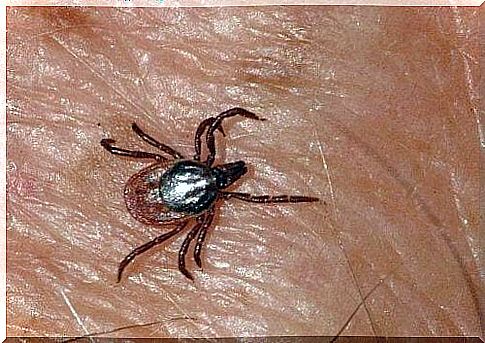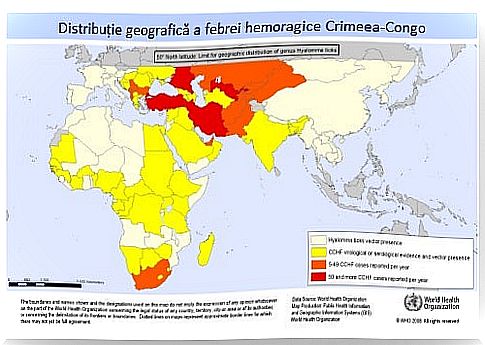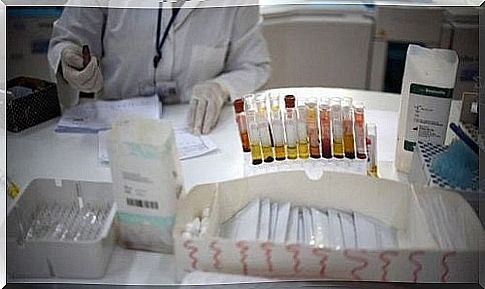Crimea-Congo Hemorrhagic Fever Has Arrived In Spain

On August 25, 2016, a 62-year-old man from Madrid, Spain, died of a disease called “Crimean-Congo hemorrhagic fever” (FHCC). This event alarmed the whole country, the Spaniards being suddenly bombarded with information about a dangerous disease they had never heard of.
However, Crimean-Congo hemorrhagic fever is not a new disease. In fact, this is not even the first time the disease has appeared in Spain.
Currently, another person has contracted this disease and is in critical condition. It is even about the nurse who took care of the 62-year-old man mentioned above. It is now isolated in a specially equipped section for doctors to treat the condition.
Although this news is alarming, experts warn us that Spaniards and the rest of Europe have no reason to panic. Many have compared Crimea-Congo hemorrhagic fever to Ebola, but this idea is an exaggeration. First of all, we must keep in mind that the Crimean-Congo hemorrhagic fever and Ebola have nothing in common. In order to avoid hasty conclusions and to know what to expect, it is essential to inform ourselves.
In today’s article we invite you to discover everything you need to know about Crimean-Congo hemorrhagic fever.
What is Crimean-Congo hemorrhagic fever?
The World Health Organization (WHO) defines Crimea-Congo hemorrhagic fever as a viral infection spread through ticks, with a mortality rate of up to 40%.

We know the following details about this disease:
- It is caused by a virus that belongs to the Bunyaviridae family .
- It is spread by ticks, mosquitoes and rodents, but also by direct contact with infected farm animals.
- It is transmitted only through direct contact with the patient’s blood, secretions and other body fluids.
Air transmission is impossible. In other words, we can be infected with the virus that causes Crimean-Congo hemorrhagic fever only if we come in direct contact with an infected animal or with the body fluids of a sick person. This is why the nurse mentioned above got sick.
- Crimean-Congo hemorrhagic fever is endemic to Africa, the Balkan Peninsula, the Middle East and Asia.
Most countries where cases of this disease occur are below 50 ° north latitude.
What are the symptoms of Crimean-Congo hemorrhagic fever?
After the patient is bitten by a tick or comes into contact with the blood or other body fluids of an infected animal, the incubation period of the virus is three days.
- The patient may experience fatigue, muscle aches, headache, dizziness, stiff neck and sensitivity to light.
- Other symptoms caused by Crimean-Congo hemorrhagic fever are hepatomegaly (enlargement of the liver), inflammation of the lymph nodes, high fever and confusion.
As already mentioned, the mortality rate of those suffering from this disease is 40%. Many patients die within the second week of contracting the disease. Survivors, however, can feel better starting with the ninth day of infection.
Unfortunately, to date, there is no vaccine against Crimean-Congo hemorrhagic fever. However, there are few cases in which the disease has managed to develop completely.

Should you worry?
We have no reason to worry. According to experts, Crimean-Congo hemorrhagic fever is not easily transmitted. Moreover, this disease has appeared over the years in countries such as Spain.
- For example, in 2011, the pathogen responsible for Crimean-Congo hemorrhagic fever was discovered in a deer population in Cáceres, Spain.
- We must also take into account the fact that the virus does not develop completely in the animal system, but only in the human system. Therefore, we will not be able to observe concrete symptoms in living things such as deer, cows, pigs and rats.
- The people most vulnerable to infections are those who work with pets.
- However, as farm animals need to be checked regularly by a veterinarian, the virus is unlikely to spread excessively.
In fact, most of us never come into contact with animal secretions and feces. Only medical staff and farm and slaughterhouse workers are at high risk of contracting Crimean-Congo haemorrhagic fever. So we need to stay calm and get all the information available.
How did the virus get to Spain?
Specialists from the Carlos III Hospital in Madrid, the same medical unit where the sick nurse is treated, claim that the virus that causes the Crimean-Congo hemorrhagic fever is already a danger that we must face every day.
International travel, animal imports and globalization have created an environment conducive to the transmission of pathogens and infections between countries. But medical authorities in many parts of the world are adequately trained to deal with the disease.

In Spain, for example, doctors followed all the protocols indicated and quarantined 190 people who interacted with the patient under investigation.
Is there a treatment for Crimean-Congo hemorrhagic fever?
We mentioned above that there is no vaccine to help us prevent this disease. But now we want to assure you that there is still a treatment.
- Doctors use ribavirin to treat the infection, and so far the results have been satisfactory.
Last but not least, we want to mention that the 62-year-old man who died due to this disease could have had other health problems, as well as a weakened immune system due to his age. In our opinion, as long as you are well informed, you have no reason to panic.









